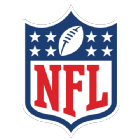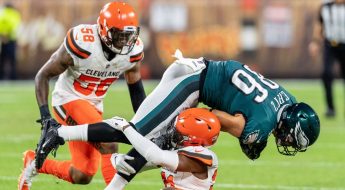Seahawks can take valuable lessons away from Super Bowl LI

On Nov. 13, the Seattle Seahawks went into Gillette Stadium and beat the New England Patriots, 31-24.
New England went 14-1 with Tom Brady as the starter this season, with its only loss coming at the hands of Russell Wilson and company.
That obviously doesn’t do the Seahawks any good, but Pete Carroll is fond of finding lessons wherever they reveal themselves. During the season, he referenced the Chicago Cubs’ Game 7 win and the presidential election during team meetings.
So there’s no doubt that Carroll kept a close eye on Super Bowl LI, looking for angles that could help his own team.
Here are some thoughts on how the Patriots’ victory over the Atlanta Falcons might relate to Seattle.
Even the GOAT looks pedestrian when pressured.
Midway through the third quarter, Brady was 19-of-31 for 196 yards. He was averaging 6.32 YPA and had a passer rating of 68.9.
One big reason: The Falcons were able to pressure him effectively. According to ESPN Stats & Information, Brady was pressured on 45 percent of his dropbacks during the first three quarters. That number dropped to 20 percent in the fourth quarter and overtime.
Wilson gave Brady a shoutout on Instagram after Sunday’s game.
The offensive line will continue to be the dominant point of conversation surrounding the Seahawks this offseason. And the Super Bowl was another reminder that even the all-time greats get flustered when pressured consistently.
At some point, the Seahawks need to do a better job of making sure Wilson has a legitimate chance to succeed. It will be interesting to see if the moves in the months ahead reflect that mission.
The lesson applies to the other side of the ball as well.
In the divisional round and the NFC title game, the Falcons blitzed more often than they had in the regular season. But against the Patriots, they sent five or more rushers just 7.2 percent of the time.
Atlanta relied on its front four, and that formula worked until late in the game. The Falcons’ defense clearly fatigued down the stretch, having played 93 snaps.
Getting pressure with four players is crucial against the game’s top quarterbacks. The Seahawks’ pass-rush was a strength in 2016 with Cliff Avril, Michael Bennett and Frank Clark. But depth should still be a priority.
The area that the Seahawks have had the most success in free agency is the defensive line. It’d be no surprise to see them add a pass-rusher or two if they can find value.
Great running teams put games away.
The Falcons gashed the Patriots on the ground in the first half, but in the third and fourth quarters, Atlanta totaled just 18 yards on nine carries.
Much has been made about the fact the Falcons ran the ball just five times after they took a 28-3 lead, but that is a misleading number. They ran just 16 total plays, and four of those (all passes) were on the final drive when time was running out. Really, it was seven passes and five runs.
Having said that, it’s completely fair to question Atlanta’s play-calls late in the fourth quarter when a sack and holding penalty took the Falcons out of field-goal range.
If the Falcons had been able to run the ball effectively in the second half and strung together some first downs, the Patriots probably wouldn’t have had enough time to come back.
Carroll and offensive coordinator Darrell Bevell have said often that they don’t care about the idea of establishing the run. Their preference is for balance, but they want to be able to pound the ball when they have leads late in games.
That didn’t happen in 2016. Seattle averaged 2.75 YPC in the fourth quarter (29th) and totaled 327 rushing yards in the final 15 minutes (23rd).
From 2012 to 2015, the Seahawks ran for 2,544 yards in the fourth quarter (tops in the NFL) and averaged 4.16 YPC (fifth).
Even if their offensive identity is changing, the Seahawks need to be able to wear teams down late with their run game. Look for that to be a focus in the spring when the team returns to practice.





